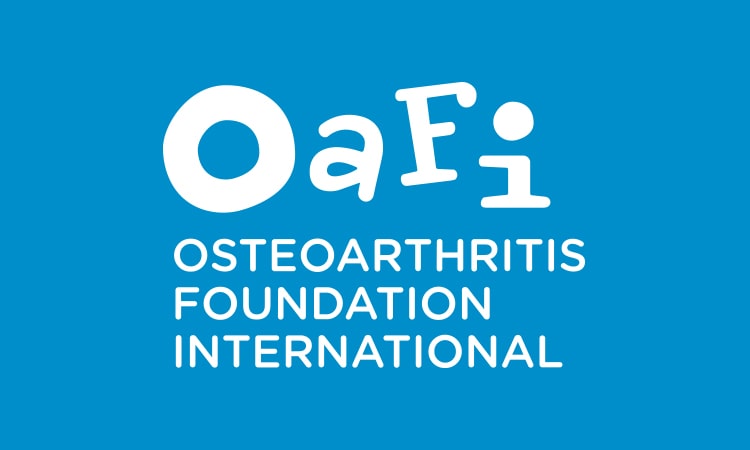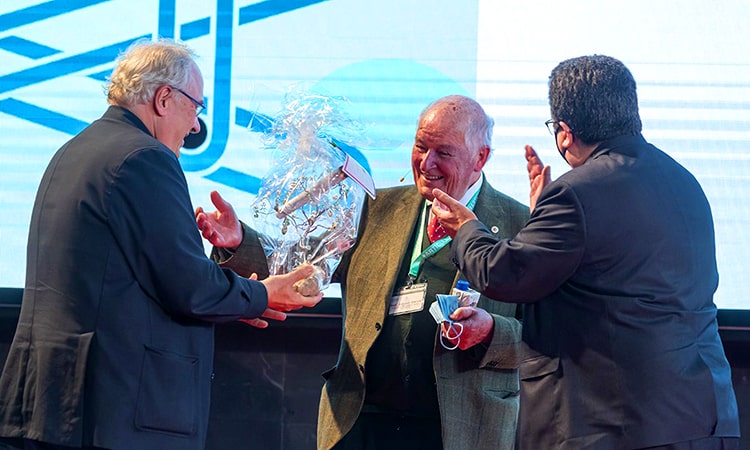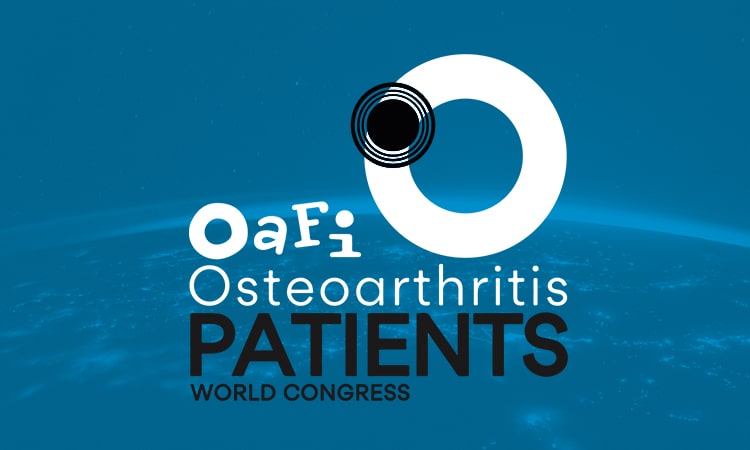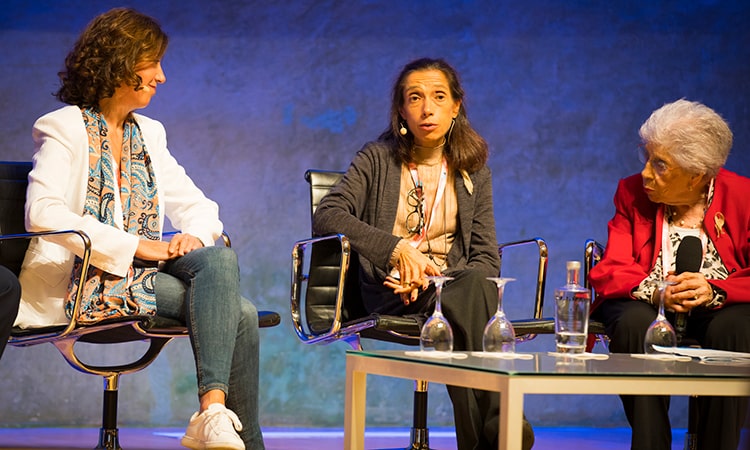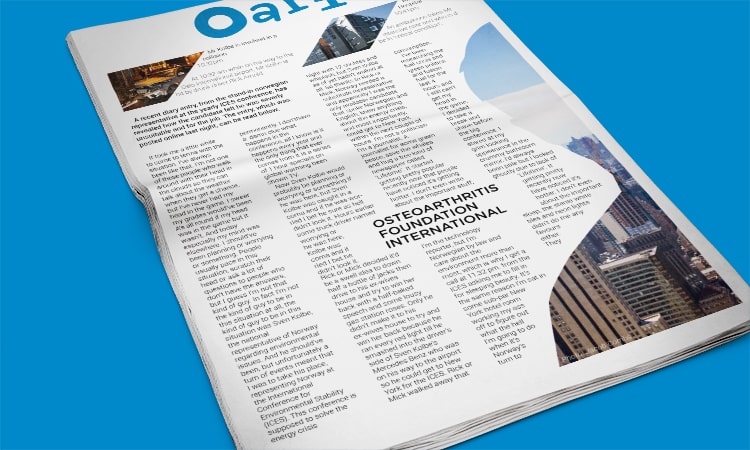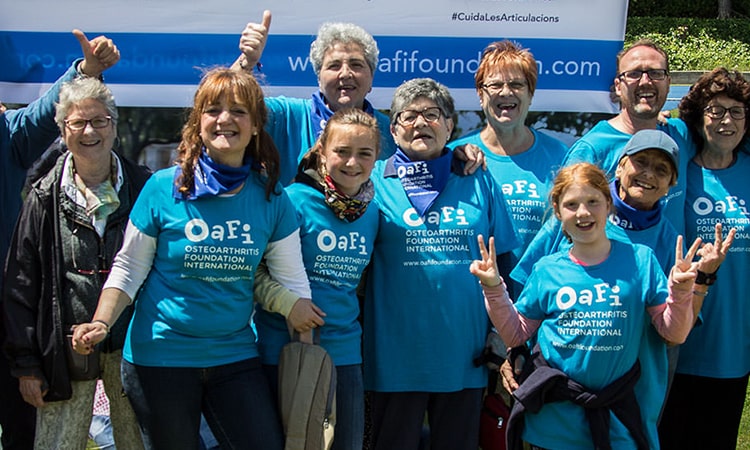- Foundation
- Actions
- Osteoarthritis
- Actuality
- OAFI Radio/TV
- Get Involved
- Contact
-
-
-
OAFI
Osteoarthritis International FoundationC/ Tuset, 19 · 3º 2ª
08006 Barcelona
(+34) 931 594 015
info@oafifoundation.comSchedule:
Monday-Thursday 9AM-6PM
Friday 8AM-3PM
-
-
-

-

-

Risk Groups
While it is true that osteoarthritis mainly affects advanced-age population, it is increasingly becoming more common in people of different sex and age with very different needs who find no response to their condition beyond the general approach.
If we elaborate the profile of the osteoarthritis patient in Spain, we can conclude that it is about 68 years old on average, two out of three are women and 75% suffer from obesity. Consequently, it has twice the risk of suffering from other pathologies such as cardiovascular diseases, cardiovascular hypertension, anxiety or depression.
Osteoarthritis is more prevalent in men below 45 years of age and in women from the age 55, the cause of this distribution being attributed to genetic and especially hormonal factors. In general, more severe forms of osteoarthritis such as the hands and knee are more frequent in females, while in men, osteoarthritis affects the hip joint more, especially before the age of 50.
However, as we have earlier mentioned, it also occurs in other risk groups.
Seniors
The increase in life expectancy has led to the aging of the world population. By 2030, almost 25% of the citizens of the European Union are expected to be over 65, while in 2005 this figure was 17%.
Currently, according to a study of the Spanish Society of Family and Community Medicine (Sociedad Española de Medicina Familiar y Comunitaria), more than 70% of those over 50 have radiological signs of osteoarthritis in some location, and almost 100% as from 75 years on.
Age is a factor that influences significantly the onset of osteoarthritis. As such, it is essential for us to incorporate into our lifestyle measures that allow us to prevent the development of the disease in order to reach maturity with good joint health.
Women
The female population – especially those over 45 or postmenopausal women – is another group at risk of osteoarthritis.
With regard to age and gender, there is a higher prevalence of osteoarthritis in women, especially in those over 50-55 years, thus it is observed among the non-modifiable factors that condition the development of the disease. Although the explanation for this difference is unknown, the relationship between gender and osteoarthritis is clear after the second half of adult life.
For example, until age 45, knee osteoarthritis is more common in men. In contrast, after the age of 55 the disease significantly affects women. Not only does it increase its incidence, but it also affects a greater number of joints and it becomes more severe.
On the other hand, 80% of the women with menopause suffer some form of articular pain. Out of this group, 50% of them admit it to be an intense or unbearable pain.
This is reflected in a study conducted by the Spanish Association for the Study of Menopause (Asociación Española para el Estudio de la Menopausia, AEEM), based on a sample of 1,600 women from all over Spain. This is due to the decrease in estrogen that occurs after menopause, being one of the causes of the high prevalence of the disease.
The most affected locations are the hands, knees, hips and spine, although the decrease in estrogen mainly affects the knee. In this regard, the Collegiate Medical Organization concludes in a report that different studies have shown that prolonged estrogen administration acts as a protective factor in the incidence and progression of knee osteoarthritis in postmenopausal women.

«I would like to express my gratitude to OAFI Foundation, in particular to Dr. Josep Vergés.
I am 51 years old and 2 years ago that menopause entered my life and with it joint and muscle pain that I had not felt until then. I woke up in the morning with a lot of stiffness and pain and during the day my physical condition was quite limited, preventing me from exercising my usual tasks normally.
Thanks to the treatment provided by Dr. Vergés, an excellent doctor with a great experience, very close and attentive to this problem, the pain gradually disappeared and today my mobility and agility have improved impressively.
There has been a before and after treatment and thanks to that my mood is much more positive now».
O.H. / OAFI Patient
O.H. / OAFI Patient
Sport Persons
Moderate physical exercise is very beneficial and advisable at all stages of life. Practicing sports is good for our joints. Strong muscles help to unload the joints better absorb shock and protect us from ligament and tendon injuries. However, when sport is performed at very high intensity levels it can cause premature wear of the joints. Taken to extreme limits, exercise can act as a pathological agent on the musculoskeletal system, generating trauma that leads to multiple injuries and osteoarthritis.
Therefore, if you practice high performance sports you must pay special attention to your joint health. As an example, athletes who practice soccer, basketball, boxing, hockey, wrestling or lifting or throwing weights (impact sports), develop more osteoarthritis than long distance runners.
According to a study on chondroprotection in sport by doctors Pedro Guillén and José Mª Vilarrubias, elite soccer players have 15.5% knee osteoarthritis, compared to 3% in non-professional players. Sports that apply higher levels of strength such as boxing, weightlifting and wrestling also imply very high risk of osteoarthritis.
Practicing sports is healthy but it must be done in a responsible way so as not to take the body to its limit and avoid mobility problems in the future. It is very important that the athlete dedicates the necessary time to warm up and recover before and after performing high intensity physical exercise.
Childhood and Adolescence
Young people are the most vulnerable population and the group in which we have to invest more time and make more educational effort. Joint protection should start from childhood by recommending appropriate rules and advice to follow since these healthy habits can avoid many ailments in the future.
Today, childhood obesity is one of the great challenges of society. In Europe, one in three 11-year-old children are overweight or obese and more than 60% of these children will be overweight at an early adulthood. Bearing in mind that obesity is one of the main risk factors for osteoarthritis, which damages joints and limits mobility, it is important to make children and young people aware of the need to acquire healthy lifestyle habits that provide them with a life free of joint problems.
Help us improve the quality of life of Osteoarthritis patients.
BECOME A PARTNER
Help us improve the quality of life of osteoarthritis patients by becoming a partner.
BECOME A VOLUNTEER
The patient is the reason for being OAFI, become a volunteer and help us improve their quality of life.
MAKE A DONATION
Your help is very important to us, with it we can finance our founding work.
CONTACT
-
C/ Tuset, 19 · 3º 2ª
08006 Barcelona - (+34) 931 594 015
- info@oafifoundation.com
-
From Monday to Thursday
from 9AM to 6PM
Friday from 8AM to 3PM
The Foundation
Other Links

The OAFI mascot, called OAFITO, was created exclusively and altruistically by the artist Xavier Mariscal.
